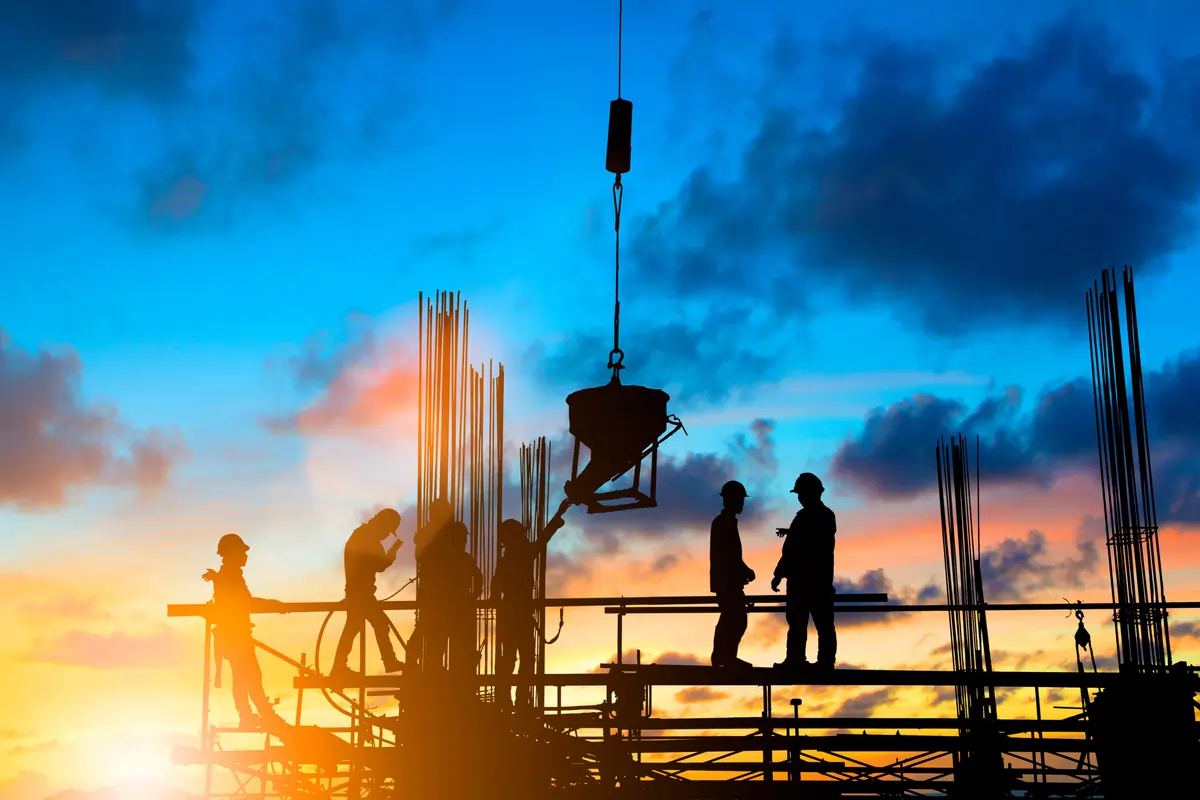
- Home > Blog > Small Business Success > 2021 Construction Trends and the 2022 Outlook
2021 Construction Trends and the 2022 Outlook
The construction industry is a dynamic and evolving space full of opportunities and changes. Every year, industry experts and small businesses need to evaluate where the industry is and where it’s going, so they can take advantage of potential growth opportunities in the next year. 2021 was an interesting year across many industries, and the trends in construction reflect how much the pandemic has affected the industry. As we look back at 2021, we’ll evaluate six of the biggest construction industry trends and explore the outlook for 2022.
6 Construction Industry Trends in 2021
Labor Shortage
One of the growing construction industry trends in recent years is a high demand for labor. New technologies are shaping how work is done, but the need for educated and intelligent workers will grow with the need to evaluate data and make informed decisions about projects. So far there are two populations that are meeting the demands of this labor shortage: women and Generation Z (born 1995 to 2010).
Women make up 47% of the American workforce but only 10.3% of the construction workforce right now. This number is increasing each year, and it will continue to increase in 2022. With a predicted growth of 2 million jobs in construction, companies are looking to hire more women than ever before. In addition, companies are looking to hire more Gen Z employees. These new recruits are younger and will help fill the labor shortage for many years to come. These younger workers also view trade school more positively than past generations due to the pandemic, so these workers are getting the training they need to succeed in construction.
COVID-19 Changes
COVID-19 has changed nearly every industry, construction included. In 2020 and 2021, many people relocated due to the pandemic, and many of these families have decided to stay put in their new homes. Construction employers have been adjusting work accordingly, providing the option to work from home more and more for construction workers.
While some families are staying put, many more people have also been looking for larger homes that are more comfortable to work from, so non-industrial construction companies have been seeing boosts in home construction opportunities.
Supply Chain & Price Disruptions
In the same vein of pandemic changes, small business owners may have already seen supply chain disruptions as a 2021 construction trend. With a shortage in truck drivers and shipping containers, suppliers aren’t able to transport materials to a job site as quickly as before. Construction managers had to spend more time waiting for supplies to work in 2021. As a result, small business owners have needed to order supplies much earlier and find secure locations to store materials long before they’ll be needed on the job site. Homeowners have also been selecting designs much earlier to give materials enough time to arrive to build the home.
With this rise in wait times, the prices of materials have also gone up. Lumber, beams, steel, and other materials cost more in 2021 than in recent years. Newly developing materials may also continue to push prices upwards. Rising prices have also driven up the labor costs, increasing the labor shortage in construction.
Worker Safety
As with many industries, the construction industry saw an increase in personal protection equipment (PPE) in 2021 to increase worker safety. Construction PPE is unique with special technology that measures worker safety and health. Sensors monitor temperature, heart rate, and steps. Some PPE can even alert job site supervisors if someone has fallen so that help can arrive quickly.
Environmental sensors found themselves on construction sites more in 2021, another part of the trend in worker safety. These sensors alert site workers of heat, wind, and noise, so that workers can quickly evacuate a job site if needed. Worker safety has been pushed to the side in past years to minimize labor costs and keep companies profitable. But the pandemic has shifted many views on safety, and construction is no exception. This trend in worker safety in 2021 kept the employees at the forefront of the industry developments.
Offsite/Virtual Construction
Like other industries, construction companies had to find alternative ways to keep up with the building demand. One trend that developed from this in 2021 was offsite construction. In a typical construction job, workers assemble on site, which produces extra material waste. On site construction also comes up against weather conditions that can lead to increased costs and labor hours. With the pandemic on top of those challenges, offsite construction has helped mitigate problems. Offsite construction allows workers to design, manufacture, and fabricate pieces of buildings in a factory. The pieces are then moved to the job site and assembled. 2021 saw an increase in this style of construction.
A similar trend is the increase in virtual construction. With more work-from-home employment, virtual construction took off. Designers can use software to design and visualize the construction of a building before starting. This trend is helpful in worker safety and pandemic safety, but it also helps reduce construction costs. Reworking and faulty building costs the industry 30% of construction costs. Virtual construction provides digital models that keep these costs down.
Increasing Regulation
2021 included a change in national administration, which ushered in trends for increasing regulation in the construction industry. One major trend is discussion about regulation with vaccines. Both OSHA and the EEOC are involved with vaccination efforts in the construction industry. OSHA issued regulations about how construction employers need to report vaccines and that they should report reactions to vaccines as illnesses. EEOC has past regulations on flu vaccines and will continue to regulate vaccination requirements in the industry. Some companies are weighing requirements for employees to be vaccinated against COVID-19, while most have stuck to encouraging employees to get vaccinated. 2021 has been a year of new and interesting regulations, and that may be a trend moving forward.
Outlook for 2022
2021 had many construction industry trends that shifted how construction is done—from material delays to virtual construction. As the industry moves into 2022, these trends will help shape the outlook for construction in 2022. These are some of the most important and exciting upcoming construction industry trends for 2022:
Modular Design & Prefabrication
Prefabricated construction is one method of offsite construction that started to emerge in 2021. The separate pieces of a building are assembled more quickly and efficiently in factories before being assembled on site with the same quality homeowners are used to. In 2022, prefabricated design will most likely grow and become more standard in the industry.
One specific type of prefabrication is modular design. While prefabrication includes any assembled building, modular design and construction specifically prioritizes the least amount of on site work as possible. With modular construction, even the plumbing and electricity are done in a factory before being moved to the job site to be assembled. Modular design will also keep growing in 2022.
Increased Environmental Focus
The outlook for the environment and construction is predicted to grow in 2022. 2021 already saw more green buildings than ever before, and in 2022, this trend should only go up. Construction companies that provide sustainable design and construction will continue to see potential and growth in the next year. Construction companies should look toward designing more green spaces like parks and gardens in buildings. Greenscaping is even becoming popular on skyscrapers.
Growth in Virtualization
In 2021, the industry saw more virtual construction and digitization, and that trend is expected to continue to grow in 2022. Virtual construction helps companies earn more contracts and reduce their overall costs. With material costs rising because of the supply chain investments in virtualization will be more profitable than ever in 2022. With the 2021 shifts toward increased worker safety, virtualization will continue to keep that trend growing in 2022.
These construction industry trends from 2021 and forecasted growth in 2022 provide the chance for small businesses to capitalize on exciting opportunities in the next year. Companies that move toward sustainability, prefabrication, virtualization, smart technology, and improved PPE will be able to capture the potential trending growth into 2022. For small companies, one challenge with growing in these areas is equipment. QuickBridge provides equipment leasing that can help small businesses get what they need to get started investing in these potential areas of growth.
Not every construction industry trend is positive though. The risks that the labor shortage and materials costs pose will also change how small businesses need to approach this next year. Companies that are able to protect against potential losses and delays with small business loans will be able to stay on the ground and building—even when the industry faces immense challenges. Bad credit loans can help provide the necessary cushion to protect against the potentially damaging construction industry trends small businesses could face in the future. See how these loans can work for your construction business or speak to a loan specialist (888.233.9085) to get started.



